You’re walking along some bushes in a park, and suddenly see a tiny gray creature skittering into the fallen leaves. At first you might think it’s a rodent, but this frenetic ball of energy is actually a shrew.
While it may appear small and gray, shrews are one of the most voracious mammalian predators on the planet. And they’re abundant and widespread, found on five continents in a variety of habitats. In the United Kingdom, there are an estimated 50 shrews per hectare in woodlands, with a country-wide population of more than 40 million shrews. The northern short-tailed shrew may be the most common mammal of the eastern United States.
Soricidae, the shrew family, contains more than 385 species. Superficially, many of these species look similar, with most having pointy snouts, a streamlined body and a grayish coloration. But they exhibit a diversity of behaviors. Even though they’re common and widespread, few people see them and fewer know their crazy habits and adaptations.
Let’s take a look at just some of the many reasons to marvel at shrews.
-
Life in the Fast Lane
If you’re lucky enough to see a shrew, you’ll notice that it’s moving rapidly, with rapid, jerky movements. This isn’t because you scared it; shrews just live life fast and furious. Your most highly caffeinated, Type A colleague will appear downright slothful compared to a shrew.
While this varies among species, a shrew’s heart rate beats 800 to 1000 times per minute. The Etruscan shrew, the smallest terrestrial mammal on earth, has a heart rate that can reach 1500 beats per minute, more than any other mammal and more even than the hummingbird.
Shrews have been recorded making 12 body movements per second. (Go ahead and try to duplicate this feat). They’re in constant motion, rarely stopping to sleep. They have a high metabolism, which means they have to eat. A lot.
A shrew’s life is a constant search for prey. Many species must eat their body weight’s worth of food each day. (I advise you not to attempt this one). If a shrew doesn’t eat within a few hours, it dies. This constant need for food has led to some truly bizarre and even disturbing adaptations.
-
Watch Those Whiskers
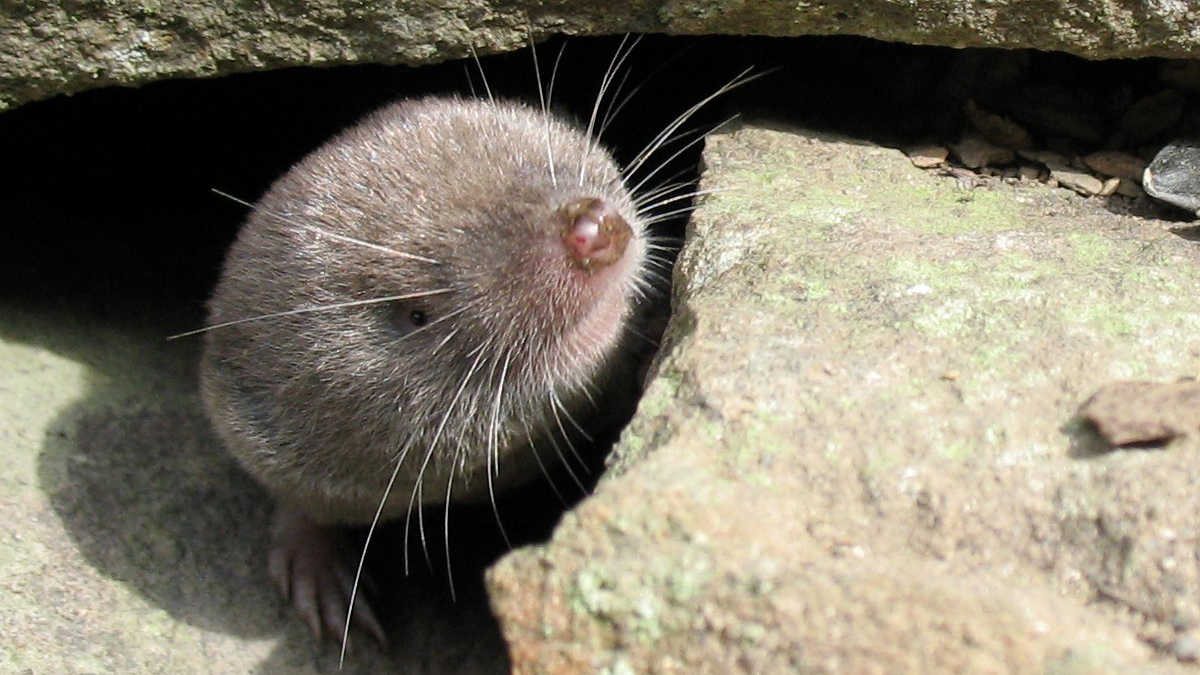
Northern Short-tailed Shrew. Photo © Gilles Gonthier / Flickr Shrews must find and subdue prey fast. They have poor eyesight and often live in thick cover filled with obstacles. How do they manage?
Many sources mention that some shrews use echolocation: they emit sounds producing sonar that helps them navigate their world (much like bats). Shrews emit a sound described as a “twitter” and it is often assumed this is used in echo-location. However, much of the evidence appears anecdotal. An article in the journal Biology Letters found “shrew-like calls can indeed yield echo scenes useful for habitat assessment at close range.”
There isn’t evidence that this echolocation is used to find prey. Instead, shrews rely on their long, highly sensitive whiskers, also known as vibrissae. According to a study published in Philosophical Transactions B, the Etruscan shrew hunts in an environment where crickets are particularly abundant. It moves its whiskers constantly – a motion called, appropriately enough, whisking – until it brushes its prey. Then it strikes quickly and with great precision.
Of course, wasting time attacking non-prey items that the whiskers brush against would burn precious energy. The researchers conducted an intriguing test:
“Experiments with dummy prey objects showed that shrews attacked a plastic replica of a cricket but not other plastic objects of similar size. Altering the shape of crickets by gluing on additional body parts from donor animals revealed that the jumping legs but not the head are key features in prey recognition.”
-
Shrew Venom, A Horror Story
You can spend way too much time on YouTube watching videos of shrews attacking mice, scorpions, snakes and other larger creatures. Spoiler alert: the shrew wins.
This is because many shrew species are venomous. Research has found that an individual shrew stores enough venom to kill 200 mice. Some shrews also use this venom for something called live hoarding.
Live hoarding sounds innocuous enough, but in reality it shares numerous plot points with that terrifying movie Hostel. Here’s how it works.
The shrew lacks hollow fangs (as in venomous snakes) but instead has a gland that allows saliva to flow with the venom. When the shrew encounters its prey – often an invertebrate, but it can also be a mouse or other vertebrate – it begins biting it, allowing the venomous saliva to flow into the wound.
For the prey, this is the beginning of a very bad day. The venom paralyzes the creature, but keeps it very much alive. The shrew can then move it to a cache, available for whenever hunting is not going so great. For an animal that has to eat constantly, this keeps a fresh if unsavory meal always at the ready.
The American Chemical Society reports that a mealworm can be kept, paralyzed but alive, for 15 days.
Shrew bites on humans are reportedly painful but fade in a few days. Be very, very glad these animals are not larger.
-
Following the Herd
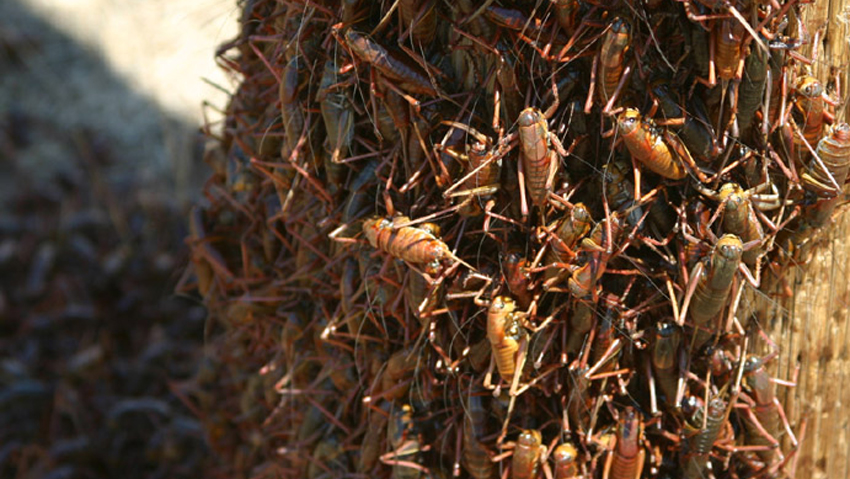
Mormon crickets in Nevada, 2006. Photo © katie madonia / Wikimedia Commons through a CC BY 2.5 license In the sagebrush country of the western United States, one species of shrews may follow the thundering herds … of Mormon crickets. Mormon crickets (actually a species of katydid) are prone to periodically have population explosions resulting in large swarms.
Vladimir Dinets, in the Peterson Field Guide to Finding Mammals, includes this intriguing description: “On arid plains these shrews follow swarms of Mormon crickets the same way Gray Wolves follow migrating Caribou herds. If you encounter a swarm, look for shrews scurrying along its tail edge.”
Dinets’ book, by the way, is like a shrew spotter’s bible, including tips on where and how to seek all the North American species.
-
Walking on Water
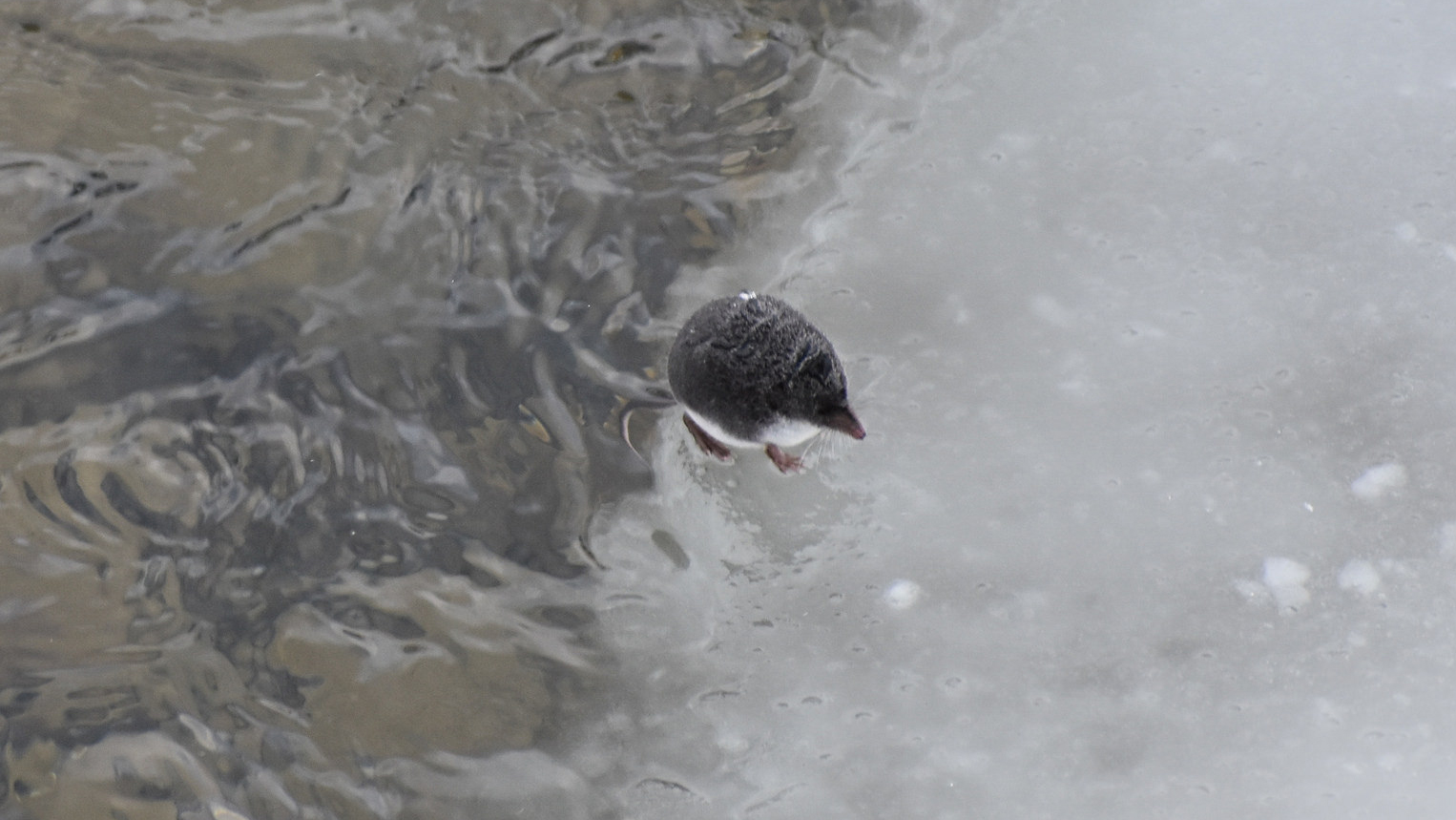
Water shrew on Pebble Creek. © NPS/April Henderson / Flickr You can find a shrew species in just about any habitat. Several species of water shrews even take to streams. The water shrew has stiff hairs on its feet that allow it to scamper across the surface of the water. Its stiff fur also traps air bubbles, allowing it to stay underwater for short bursts. It must stay in constant motion underwater, or it pops back up to the surface. It hunts caddis larvae and other small aquatic prey.
Theodore Roosevelt (yes, the president) observed a water shrew catching a minnow in North Idaho. He described it in his book The Wilderness Hunter: “It was less in size than a mouse, and as it paddled rapidly underneath the water its body seemed flattened like a disk, and was spangled by tiny bubbles, like flecks of silver.”
As a side note, Theodore Roosevelt also kept a shrew in captivity (he fed it a mouse and garter snake) and observed, wrote about and collected shrew species on his lengthy African safari. He even has a shrew species named after him. I’m not surprised that he had a love of shrews, given his accomplishments as a conservationist, naturalist and outdoors enthusiast. I wish for another politician like him nearly every day.
-
The Incredible Shrinking Brain
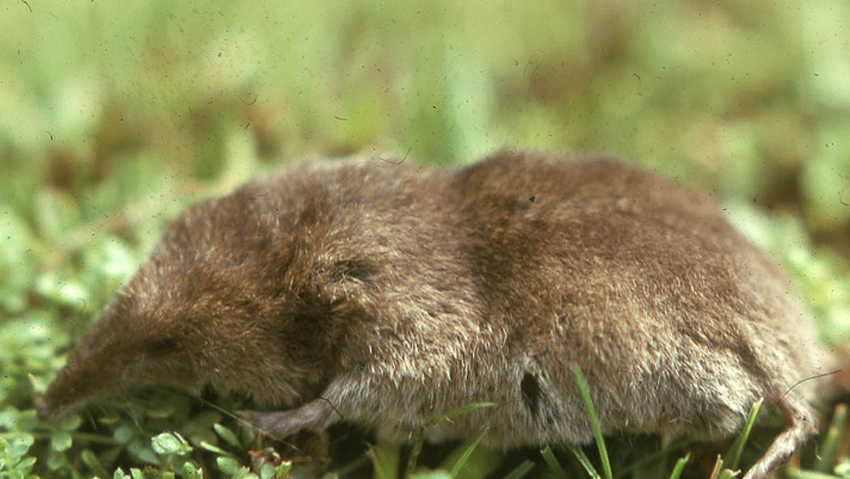
Common shrew (Sorex araneus). Photo © Dr Mary Gillham Archive Project / Flickr through a CC BY 2.0 license Many wildlife species feast and bulk up for the cold winter months. With the shrew’s metabolism, weight gain is not an option. And so at least one shrew species shrinks. A recent study, published in the journal Nature, found that in common shrews in Germany, “Their spines also got shorter, and major organs, including the heart, lungs and spleen, shrank. Even their brain mass dropped by 20–30%.”
Researcher Javier Lazaro hypothesized that “reducing their body mass during winter might increase their chances of survival, because they wouldn’t need so much food.” The brain in particular has high energy requirements, but the study could not determine if shrews experienced decreased cognitive functions.
-
Foxes Hate Them, Trout Love Them
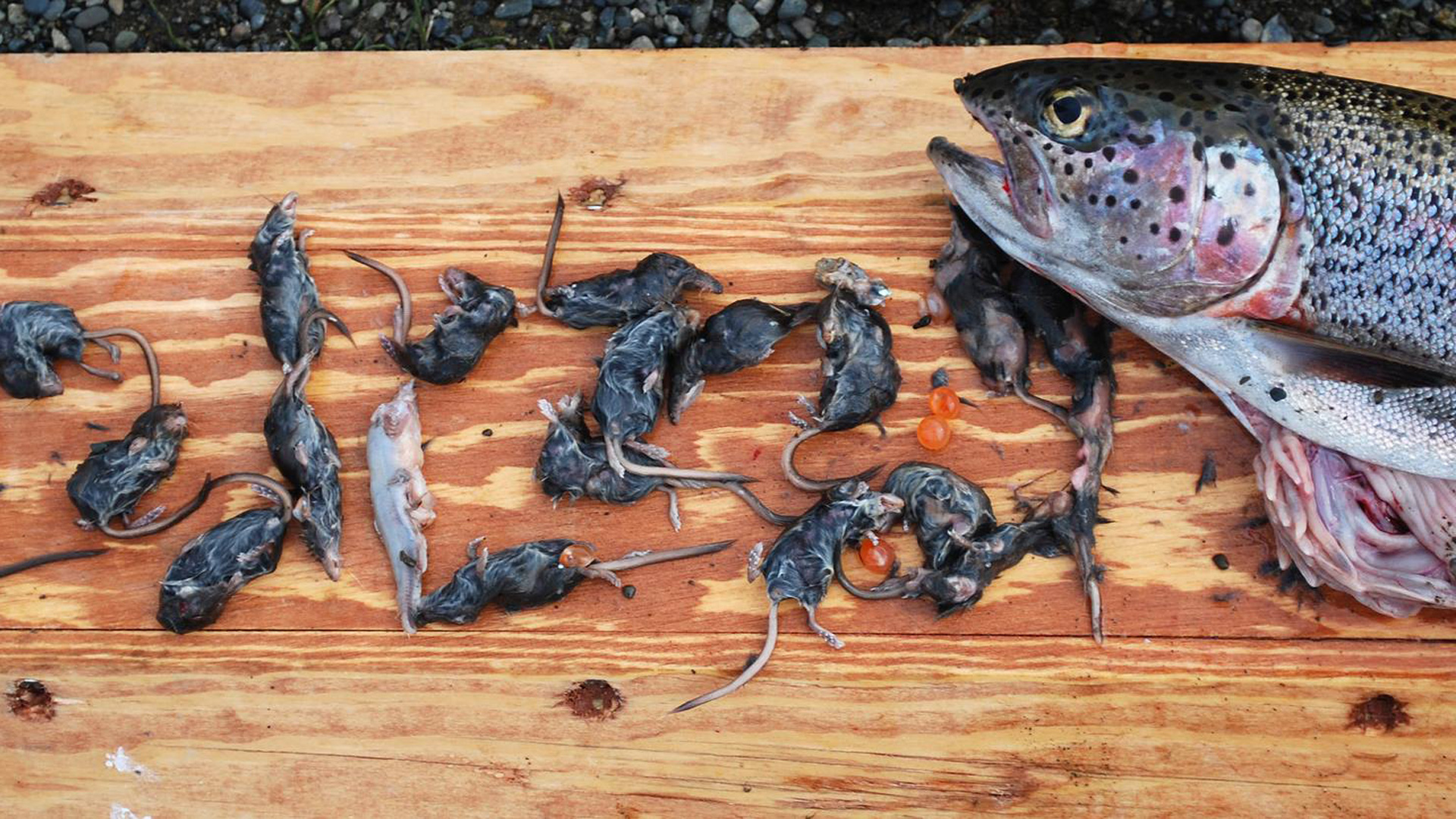
The shrew-eating trout of Togiak National Wildlife Refuge. Photo: U.S. Fish and Wildlife Service. Shrews may be fierce predators, but they’re small, which means they in turn become prey. Many mammalian predators, including red foxes, raccoons and cats, will attack them but rarely actually eat them. That’s because shrews emit an unpleasant musk that some liken to the smell of skunk.
This does not deter other predators, like owls and snakes. But my favorite incidence of shrew predation is a rainbow trout caught at Alaska’s Togiak National Wildlife Refuge that had 19 shrews in its stomach. These were not water shrews, but other species that fell into the water and became prey. You can read the full account in my previous blog.
-
Shakespeare and Shrews

Petruchio (Kevin Black) and Katherina (Emily Jordan) from the 2003 Carmel Shakespeare Festival production at the Forest Theater. Photo © Smatprt / Wikimedia Commons through a CC BY-SA 3.0 license And then there’s the literary work, Shakespeare’s Taming of the Shrew. During my Shakespearean literature class in college, my professor stated that the Bard did not refer to the literal shrew, as such a benign, inconsequential mammal wouldn’t fit the theme of the play.
As a lifelong mammal nerd, this amounted to heresy. I decided to make my final paper for the class a detailed comparison of the real shrew with the literary one. This, in retrospect, was a bit of a gamble. I relied on a store of shrew facts, many of which now appear in this blog.
As I read my professor’s comments on the paper, I could sense that she was initially annoyed at my topic, then became increasingly alarmed as she realized I was quite serious. The paper received an “A”, along with the pointed suggestion that I pursue a career in nature writing as opposed to academia.
And here I am, still sharing shrew facts.
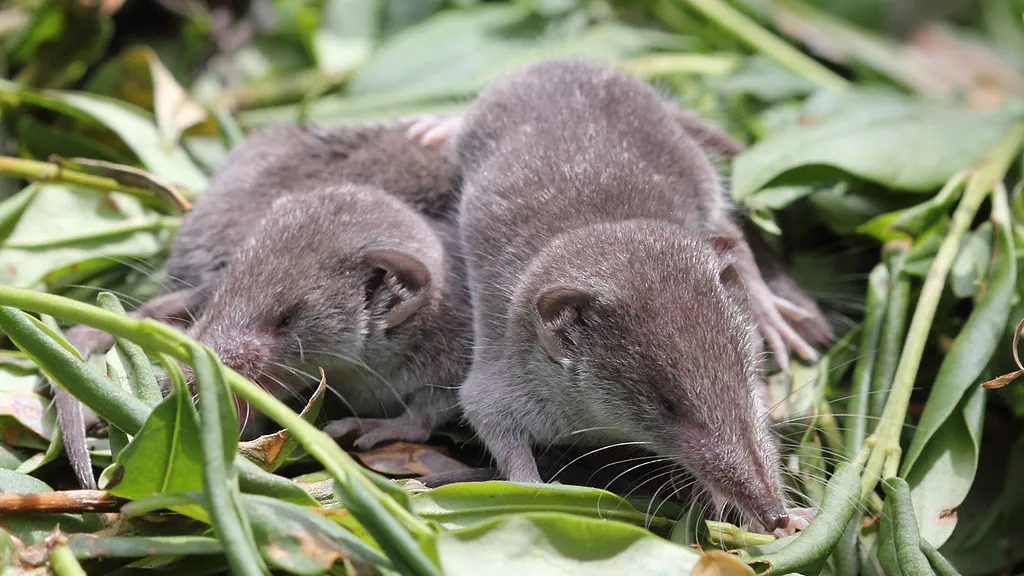



Loved the article and learning about shrews! I agree with your professor, you are a fantastic nature writer!
Sandy,
Thank you for the kind comment. Glad you enjoyed learning about shrews!
Matt
So tickled to read all your fascinating facts about shrews. I’ve only seen one once, hunting in my yard, so tiny and busy and quick. T. Roosevelt just went up another notch in my estimation and second your wish for another. Thanks for the lead to Dinets.
I really enjoyed reading and learning more about Shrews. I know if they don’t eat every 3 hours they will die. What I wanted to know is if they do eat every 3 hours. Do they have years they can live ?
Shrews have short life spans, from 1.5 to 3 years depending on species. Most do not reach old age. Life in the fast lane is tough!
I discovered six shrews in my compost bin during the turning process of producing usable material.
On their exposure, they quickly scurried out of the bin through an entry hole at ground level. One was caught, photographed and then released through their escape hole. The shrews had formed a chamber at ground level which I am assuming was a breeding chamber. There is a meter of compost above ground level.
The compost has a good supply of insects, worms, and woodlice, not sure about slugs or snails but in riddling the compost for use occasionally find empty snail shells.
What’s your opinion on shrews being white and grey; my cat catches DOZENS of shrews in Pennsylvania. And he’s caught two that were identical to the grey ones, very small barely visible ears and eyes, longer snout, short tail, clawed smaller feet; but they were blocked colored grey and white like how some pet mice look! (Looked nothing like a mouse though) It was shocking because now I’ve been trying to research if it were even a shrew because I’ve never heard nor seen the coloring. Any thought? Thanks.
I have not heard of this but shrews do have variation in their pelt coloration. I will look into it more. Thanks for your question.
Matt
Until yesterday I had never seen a shrew. We caught three running through our living room! we live outside of Pgh. PA. We live in the country, and have had bats, mice and a squirrel come in but never a shrew! They looked like the ones at the top of your article. can you tell me what kind of shrews they are? my question is would they have had to be born in my house to have had three! Do they normally come into homes? Fascinating critters! thank you for your article!!!
Dear Matthew Miller ….My hero is Theodore Roosevelt!! While reading Mornings on Horseback by David McCullough I came across the Great Shrew Incident……What the heck exactly is a shrew ….I googled…. wow did I get answers!!! Plus someone else on the planet knew my Teddy story!!!!!!!
Sure am glad your teacher directed you to the world of nature AND gave you an A
Thank you for the nice comment! It made my day. And always great to hear from another Roosevelt fan.
Matt
I’m going to be late to work because I found your blog. WONDERFUL writing and thanks for the good laugh at the end….you just made my day. (I had looked up shrews to see why my barn cats ignored the trapped and killed shrew I offered them last night…..I get it now!)
Shakespeare surely did mean a shrew in his WONDERFUL play. Take nothing away from that.
But the Professor was surely thinking of a VOLE which is also a “wee timourous beestie” and can look very similar to literary folk ungiven to scientific thought. But the vole is a RODENT almost exclusively vegetarian whereas the shrew is a wild carnivore more related to a mole or a hedgehog.
Compare their dentitions.
I caught a shrew today by the entry of a grocery store. I saw it running and it stopped sometimes and I picked it up..I had gloves on. It nestled right down in my glove..I put it in a little box with high sides, put the glove in the box and it hid under it. Took it to the humane society, talked with guy there, left it with them….really kind of wanted to take it home. Called them later, but those people were gone, I’ll call them tomorrow. I’ve read a lot about them and think I could keep it decently. Am I crazy??? I’m not fond of the fact they paralyze something and then eat it alive!!!! But that’s nature I guess. They probably wouldn’t let me have it back anyway….Maybe it died. It was a very cute little critter.
Loved the article. Thank you very much and keep them coming.
Thanks really needed it and very helpful
I had to relocate a shrew that lived in our garden, to both protect her from feral cats, and to reduce the insectivorus competition for the local hedgehog that still likes to live here (it’s incredible how many insects a single shrew eats per day!). So after having scouted a new suitable habitat, I installed a live trap, watched it constantly, and as soon as it snapped shut, I covered it with a cloth to reduce stress, and took it to the new location. I had te be quick, due to the fast metabolism. After opening the trap door, the shrew gingerly got out, looked back at me, shouted angrily something in shrewanese, and ran away. I sure hope she got many offsprings.
Oh, btw, shrews are said to be far cousins of hedgehogs.
Just found a shrew in my back yard. My dogs have been barking at something and driving us crazy fo r the past week. Now we saw the shrew tonight and managed to get the dogs away from it with a hose. We have cats as well. Now what do we do with this animal. Its driving us nuts. Which reminds me we do feed the jay birds with nuts during the day. So maybe that is why this creature has appeared. We live in Beaverton, Oregon. Can anyone help.